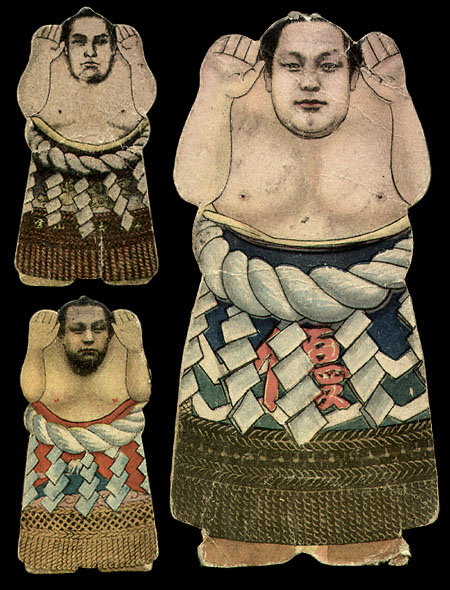The 3 Treasures I am referring to are the television, electric washing machine, and electric refrigerator. These treasures rapidly enhanced the standard of living in Japan and ushered in the era of mass consumerism. Televisions in homes now offered a distraction to kids who otherwise might be playing menko with their friends. The pressure of parents on Japanese children to advance themselves in society (basically go out and earn these three treasures} through studying more and hard work also decreased time to play menko. Playing menko was often seen as a hindrance to advancing japan and children were spending all their extra time.
The last sumo menko set of the golden era was the 1964 Marusho Tawara 5 set. This set was not extraordinary at all and a sad end. In fact, this set was a rehash of several other sets Marusho had done earlier in the 1950s. At this point, menko profits were likely all dried up and they were attempting to crease a set with as little investment as possible. The total number of menko in this set is likely between 30-50. It does, however, contain 5 Yokozuna (Kashiwado, Taiho, Tochinoumi, Sadanoyama, Tamanoumi) at various stages in their career.
Each menko can have several of the approximately 10 different back designs and each of those back designs can be found in different colors of ink making the master checklist quite large. There are 5 different types of backs: Red Ink, Blue Ink, Grey Ink, Light Green Ink, and Dark Green Ink.































